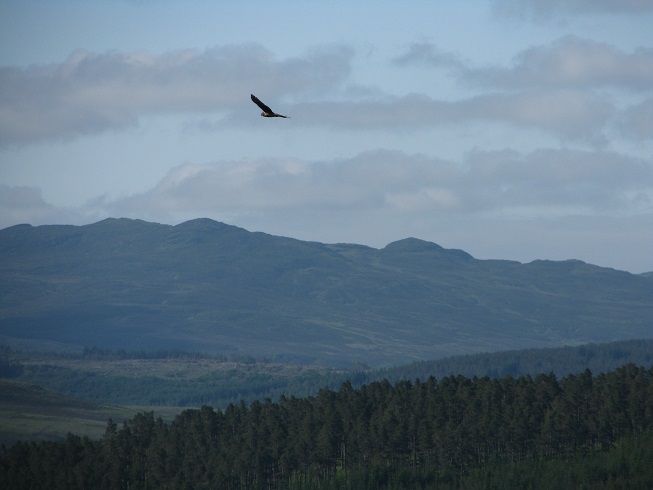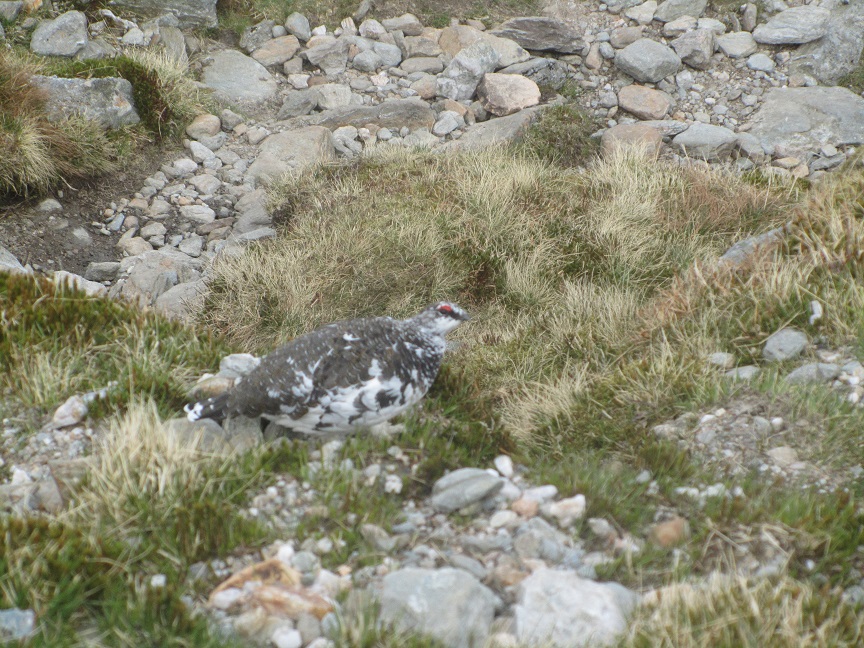
It turns out that my failure to see hen harriers in Glen Bruar (see here), despite the abundance of red grouse, is not because they are not there, as this photo demonstrates – thanks Jane! I have also discovered that hen harriers are mentioned in the Environment Impact Assessment for the Glen Bruar hydro-scheme which was produced back in 2012. Mea culpa, but its not easy to find out if an apparent absence of a species like hen harrier from moorland is a sign of persecution or is because you were in the wrong place at the wrong time or is simply because, as in my case, your birdwatching skills are at the amateur end of the spectrum.
This has got me thinking about the longstanding policy of RSPB, British Trust for Ornithology and others to keep reports of certain raptor species secret. I try and record my bird sightings on the hills tops on Birdtrack, the BTO’s recording system, but when I have seen and recorded eagles, for example, they disappear into the ether. I have no way of finding out whether my sighting is exceptional or whether other people may have seen the species there. By contrast, when I spotted a ptarmigan on the summit path of Ben Vane, in the LLTNP, earlier this year I could search and find the last record was back in 2012.

This secrecy policy made sense when the main threat to our raptors were egg thieves but as Raptor Persecution Scotland and others have demonstrated, the main threat now is the way our grouse moors are managed. Gamekeepers know better than anyone where raptors are likely to be found or when they move into an area and, for any that wish to persecute raptors, this is much easier to do if you are the only person who knows this. What’s more, where proof of illegal persecution has been discovered, its often hillwalkers – members of the general public – who come across it. A recent example was the black headed gull found in an illegal trap on the Invercauld Estate in the Cairngorm National Park. So, instead of trying to keep knowledge about raptors whereabouts from the public, who generally do them no harm, how about trying to publicise the presence of raptors in order to offer them some protection from irresponsible gamekeepers?
Knowing a bird like a hen harrier is likely to be present in a place is worth a lot – much more than simply knowing it might occur. If I had had Jane’s photo, it would have been worth stopping, 15 minutes or half an hour dedicated to scanning the moor for hen harrier. If I had been successful it would have made my day. It could also help protect the bird. Hen harrier sighted on one of those estates in the eastern Cairngorms with terrible records of raptor persecution, publicise it and get people out there – knowing that other people could be watching might just make irresponsible gamekeepers keep twice.
I would take this further. I believe the Cairngorms National Park should promote hen harrier, like they do in Clyde Muirshiel Regional Park. The best protection the osprey has is that so many people have seen them. Most estates fear the public repercussions of being found to have persecuted them so much that they don’t even think about it. Conversely, the biggest challenge for the hen harrier is so few people have seen them and estates know that whatever the evidence of persecution, there has never to date been sufficient public outrage to force our politicians to act.
I started my run from House of Bruar and a packed car park. Five minutes up the Falls path and there was no-one present, despite the magnificent gorge. Even fewer people take the forest track beyond the gorge through the woods and out onto the moor. A lost tourist and educational opportunity.
So how about a video link next year to three or four hen harrier nests in the Cairngorms National Park? There would be no need to give the exact location of nests but the Park could also promote walks to places you might see harriers. In Atholl, for example, House of Bruar would be a great location for a video link and you could promote a walk to the edge of the woods to a place – and maybe a hide -where people would have a good chance of seeing a harrier if they watched and waited a bit. Take it further, and give people the challenge of spotting a harrier.
Our National Parks should be places where we can try out different ways of doing things. I am not saying we should publicise the presence of hen harrier across the country yet but keeping hen harriers and other rare raptors secret has not prevented their decline, so why not try the reverse in our National Parks and see what impact it has?

I agree, it would be great to see year on year easily accessed records for birds, mammals etc and see like you say if your own sighting was a rarity or commonplace. Secrecy has not helped. Sadly however twitchers who look to bag species and tourists and some photographers looking to bag species can be destructive. Rogue capercaillie males are a prime example, I am always being asked where the best place is to go and see caper. But sadly they suffer enough disturbance as it is. Everyone wants to go and gawk at a rogue caper but the reality is stress for the bird.
Not reading the title properly, whoops, raptors. But yes still ground nesting raptors could be disturbed by species bagging photographers